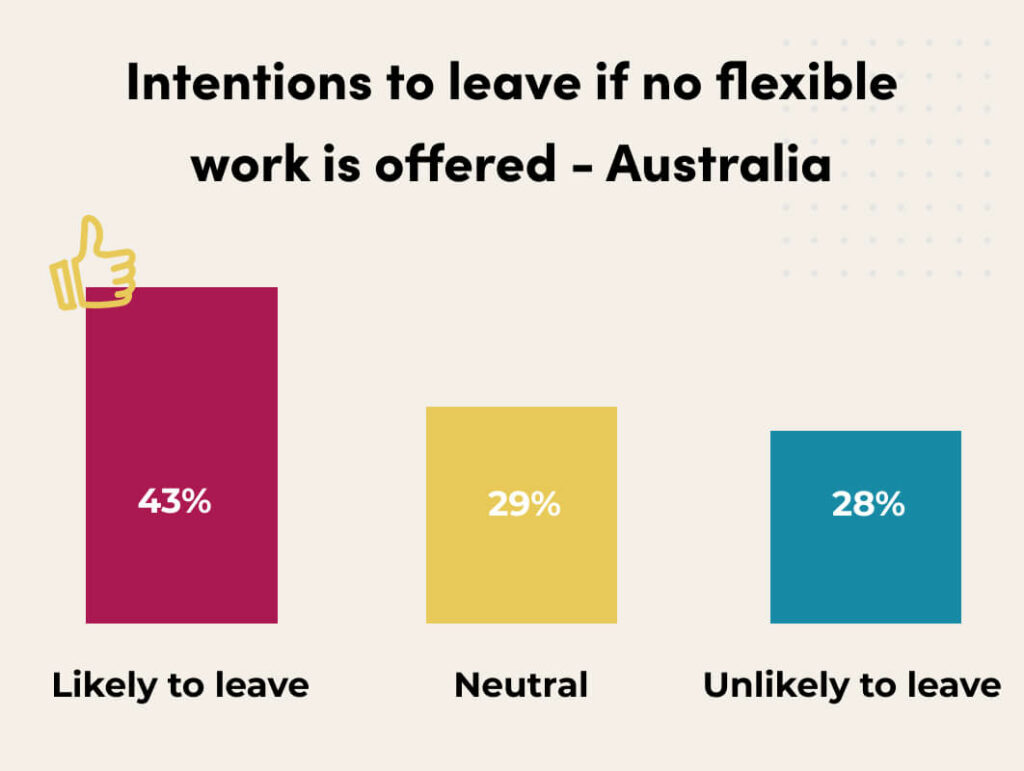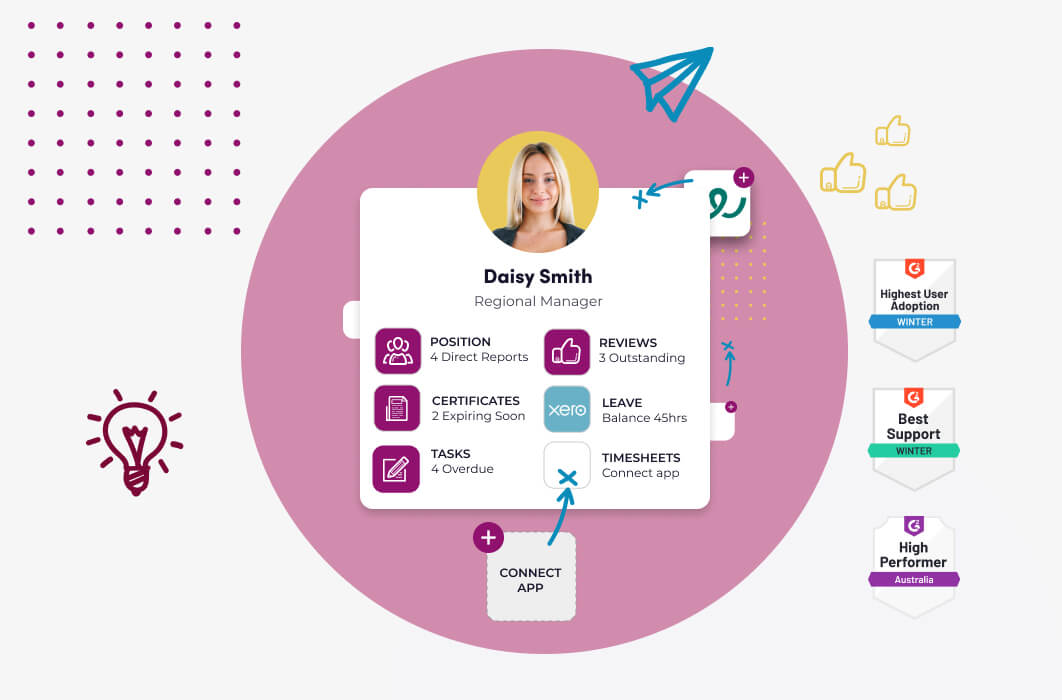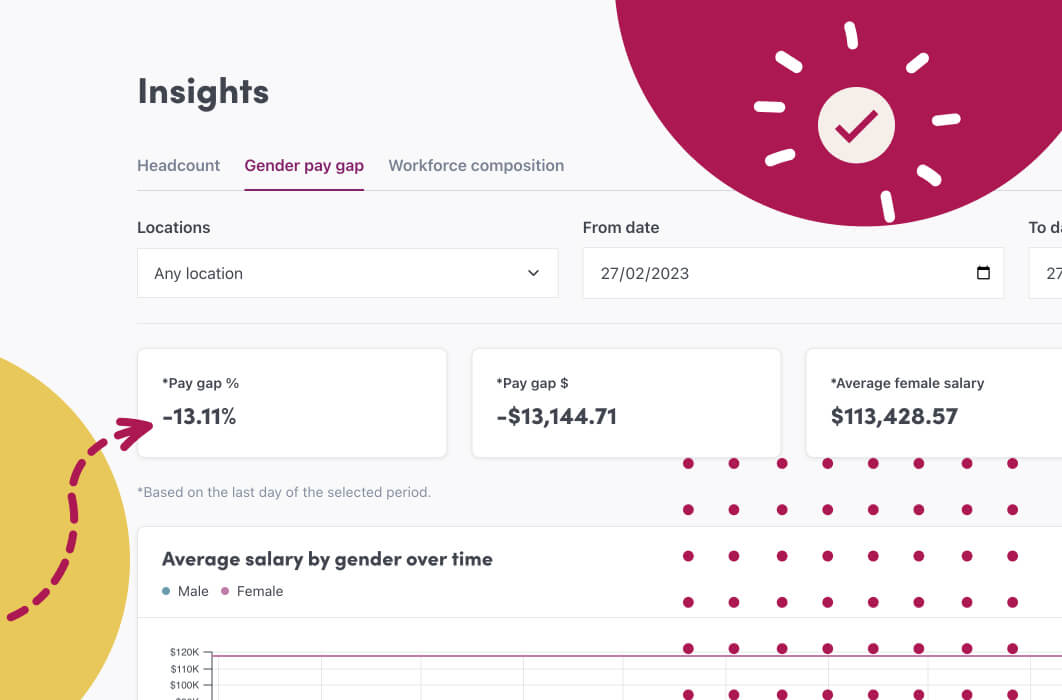For the first time ever, flexible working is poised to be the predominant way of working for Australian employees once the pandemic is behind us. Of course, this only applies to some of the workforce – sorry retail and hospitality folk! You can’t serve customers their meals from home!
It’s no surprise employees opt for flexible work arrangements that adapt to our busy lifestyles. What has been open for debate was the question around longevity once the pandemic ended. Will employers retain flexible working arrangements when the pandemic ends?
Well, if you are an employer that wants to stop offering flexible working, then you will have trouble attracting and retaining top talent. A new national survey of Australian knowledge workers, conducted by the Centre for the New Workforce at Swinburne University of Technology, showed almost every worker surveyed wants some form of flexible arrangements. When asked the ideal number of days of work each week in the office post pandemic: home-based workers want 1.5 days each week, office-based workers 3.7 days, and flexible workers 2.8 days.
These results do not surprise.
These days, prospective hires don’t ask, “is there an option for flexible working?”, they ask, “how flexible are my working options?”
Flexible working is no longer just a nice-to-have; flexible working is emerging as a deal breaker. More than two in five knowledge workers (43%) said they would leave their employer if not offered flexible working arrangements for an employer who did.
Lack of flexible work options a deal breaker?
More than 2 in 5 employees will consider leaving their employer if it is not offered.
Flexible working is now a non-negotiable for 1 in 8 workers.
Some employees would trade off flexible working arrangements if they were offered more days off, a pay-rise, or improved job security.

Are there problems with flexile working arrangements?
As Oscar Wilde once said, “No good deed goes unpunished”.
And sure enough, flexible work arrangements come with their potential issues.
Based on the experience of the last three months of work, flexible workers:
- Do not feel as connected to their organisation
- Do not feel as supported and trusted at work
- Have lower levels of meaning and purpose at work
- Remote work fatigue
This is not a result of flexible working itself, but a symptom of having the right knowledge and technology available within the business. It is possible to engage and communicate with employees in flexible working environments.
Further reading
Work from home vs the office?
Part of the solution is to consider the work that is ideal for home versus the office.
Consistent with a recently published report, we find the work most suitable for home-based working is routine work. This includes coordinating and completing tasks with teams or maintaining usual business outputs. This should be the focus of home-based work in flexible arrangements.
By contrast, completing a creative task is more suited to office working. In an office environment, workers get to connect, collaborate, create and learn. Things like informal chats, teamwork, working across teams within the organisation and brainstorming new ideas are all tasks that are better performed in an office setting.
Why is it important to offer Flexible working arrangements?
Offering flexibility is becoming increasingly important for organisations across Australia as they begin to recognise it as a key enabler of gender equality. Attracting and retaining diverse talent is crucial to future-proofing the workplace and the Australian economy more broadly. Making workplaces more flexible and responsive to the needs of employees is a key way of doing this.
Technology that ignites company culture
Worknice is a full lifecycle HR platform that bakes in performance and culture into everything it does. Find out more.
Read more


